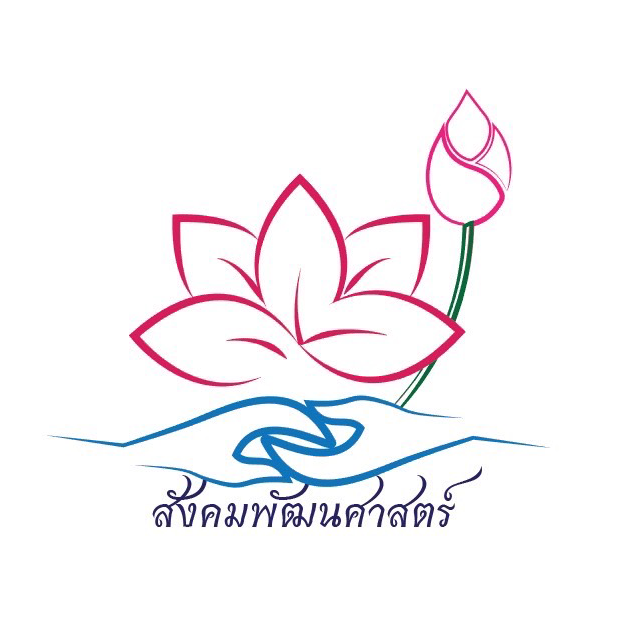ความสัมพันธ์ระหว่างการรับรู้ภาพลักษณ์ตราสินค้ากับคุณค่าตราสินค้า ธุรกิจกาแฟสตาร์บัคส์ของผู้บริโภคในจังหวัดภูเก็ต
Main Article Content
บทคัดย่อ
งานวิจัยนี้เรื่องนี้มีวัตถุประสงค์คือ 1) เพื่อศึกษาเกี่ยวกับการรับรู้ภาพลักษณ์ตราสินค้าและการรับรู้คุณค่าตราสินค้าธุรกิจกาแฟสตาร์บัคส์ของผู้บริโภคในจังหวัดภูเก็ต และ 2) เพื่อศึกษาความสัมพันธ์ระหว่างการรับรู้ภาพลักษณ์ตราสินค้ากับคุณค่าตราสินค้าธุรกิจกาแฟสตาร์บัคส์ของผู้บริโภคในจังหวัดภูเก็ต เป็นการวิจัยเชิงปริมาณโดยใช้แบบสอบถามเป็นเครื่องมือในการเก็บรวมรวมข้อมูลจากกลุ่มตัวอย่างผู้บริโภคกาแฟสตาร์บัคส์จำนวน 400 คน ใช้วิธีการสุ่มตัวอย่างแบบบังเอิญ (Accidental Sampling) วิเคราะห์ข้อมูลด้วยสถิติเชิงพรรณนา ได้แก่ ความถี่ ค่าร้อยละ ค่าเฉลี่ย ค่าส่วนเบี่ยงเบนมาตรฐาน และสถิติเชิงอนุมาน (Inferential Statistics) ใช้สถิติสัมประสิทธิ์สหสัมพันธ์แบบเพียร์สัน (Pearson Correlation Coefficient) เป็นสถิติทดสอบ จากผลการศึกษาพบว่า ผู้ตอบแบบสอบถามส่วนใหญ่เป็นเพศหญิง มีอายุอยู่ระหว่าง 21 - 34 ปี มีระดับการศึกษาอยู่ในระดับปริญญาตรี ประกอบอาชีพธุรกิจส่วนตัว/อาชีพอิสระ มีรายได้เฉลี่ยต่อเดือนในช่วง 20,001 - 40,000 บาท และมีสถานภาพสมรส ผลการศึกษาโดยรวมมีการรับรู้ภาพลักษณ์ตราสินค้าของผู้บริโภคทั้ง 6 ด้านอยู่ในระดับมากที่สุด (ค่าเฉลี่ย = 4.35, S.D. = 0.53) ซึ่งกลุ่มตัวอย่างมีการรับรู้ด้านบรรยากาศของร้านเป็นอันดับ 1 และผลการศึกษาโดยรวมมีการรับรู้คุณค่าตราสินค้าทั้ง 4 ด้านอยู่ในระดับมาก (ค่าเฉลี่ย = 3.88, S.D. = 0.80) ซึ่งกลุ่มตัวอย่างมีการรับรู้ด้านการรับรู้คุณภาพเป็นอันดับ 1 สำหรับผลการทดสอบสมมติฐาน พบว่า ภาพลักษณ์ตราสินค้าทุกด้านมีความสัมพันธ์ทางบวกกับคุณค่าตราสินค้าอย่างมีนัยสำคัญทางสถิติที่ระดับ 0.01 และระดับ 0.05 โดยเฉพาะอย่างยิ่งภาพลักษณ์ตราสินค้าด้านสินค้ากับคุณค่าตราสินค้าด้านการรับรู้คุณภาพ มีความสัมพันธ์ระดับมากอย่างมีนัยสําคัญทางสถิติที่ระดับ .01
Article Details

อนุญาตภายใต้เงื่อนไข Creative Commons Attribution-NonCommercial-NoDerivatives 4.0 International License.
เอกสารอ้างอิง
กรุงเทพธุรกิจ. (2568). เปิดรายได้ ‘6 ยักษ์กาแฟเมืองไทย’ ปี 2567 โกยฉ่ำสูงสุดทะลุหมื่นล้าน! เรียกใช้เมื่อ 30 พฤษภาคม 2568 จาก https://www.bangkokbiznews.com/business/business/1182002
รัฐบาลไทย. (2568). “ภูเก็ต” ครองแชมป์เมืองทำเงินท่องเที่ยวปี 67 กวาด 4.9 แสนล้าน-รัฐบาลลุยกระตุ้นเที่ยวไทย หวังดัน GDP พุ่ง. เรียกใช้เมื่อ 31 มีนาคม 2568 จาก https://www.thaigov.go.th/news/contents/details/94202
สตาร์บัคส์. (2567). ประวัติสตาร์บัคส์ประเทศไทย. เรียกใช้เมื่อ 10 ธันวาคม 2567 จาก https://starbucks.co.th/th/about-us/starbucks-in-thailand
Aaker, D. A. (1991). Managing brand equity: Capitalizing on the value of a brand name. New York: The Free Press.
_________ (1996). Building strong brands. New York: The Free Press.
Al-Dmour, H. et al. (2013). The effect of services marketing mix elements on customer-based brand equity: An empirical study on mobile telecom service recipients in Jordan. International Journal of Business and Management, 8(11), 13-26.
Alhaddad, A. (2014). The effect of brand image and brand loyalty on brand equity. International Journal of Business and Management Invention, 3(5), 28-32.
Bartz, A. E. (1999). Basic statistical concepts. (4th ed.). United States of America: Prentice Hall.
Brand Age online. (2024). ขออีก 3 ปี กาแฟ “พันธุ์ไทย” พร้อมหายใจรดต้นคอ “คาเฟ่ อเมซอน” ด้วยจำนวนสาขา 5,000 แห่ง และส่วนแบ่งตลาด 40%. Retrieved March 20, 2025, from, https://www.brandage.com/article/41012?fbclid=IwY2xjawKF8NRleHRuA2FlbQIxMABicmlk
Buil, I. et al. (2013). Examining the role of advertising and sales promotions in brand equity creation. Journal of Business Research, 66(1), 115-122.
Chang, W.-J. (2021). Experiential marketing, brand image and brand loyalty: A case study of Starbucks". British Food Journal, 123 (1), 209-223.
Chen, W. C. (2021). The relationship between Starbucks brand’s image, trust, and online engagement. Chulalongkorn University Theses and Dissertations (Chula ETD). Retrieved March 10, 2025, from https://digital.car.chula.ac.th/chulaetd/7736
Cochran, W. G. (1997). Sampling techniques. (3rd ed.). New York: John Wiley & Sons.
Dada, M. H. (2021). Impact of brand association, brand image & brand loyalty on brand equity. Journal of Marketing Strategies, 3(1), 29-43.
Foroudi, P. et al. (2018). Perceptional components of brand equity: Configuring the symmetrical and asymmetrical paths to brand loyalty and brand purchase intention. Journal of Business Research, 89(8), 462-474.
Godey, B. et al. (2016). Social media marketing efforts of luxury brands: Influence on brand equity and consumer behavior. Journal of Business Research, 69(12), 5833-5841.
Inkuer, A. (2023). Perceived brand equity influencing intention behavior of OTOP Natwatwithi tourism community. In International Academic Multidisciplinary Research Conference 2023. Munich Germany.
Isoraite, M. (2018). Brand image development. Ecoforum, 7(14), 1-6.
Kapferer, J. N. (1997). Managing luxury brands. Journal of Brand Management, 4(4), 251-259.
Keller, K. L. & Swaminathan, V. (2020). Strategic brand management: Building, measuring, and managing brand equity. (5th ed.). Harlow: Pearson Education.
Keller, K. L. (2013). Strategic brand management: Building, measuring, and managing brand equity. (4th ed.). Essex: Pearson Education.
Kim, K. H. et al. (2008). Brand equity in hospital marketing. Journal of Business Research, 61(1), 75-82.
Madden, T. J. et al. (2006). Brands matter: An empirical demonstration of the creation of shareholder value through branding. Journal of the Academy of Marketing Science, 34(2), 224-235.
Malhotra, N. K. (2010). Marketing research: An applied orientation. (6th ed.). Prentice Hall: United States of America.
Parris, D. L. & Guzmán, G. M. (2023). Brand concepts in the 21st century: A bibliometric analysis. Journal of Brand Management, 30(1), 173-188.
Porter, M. E. (1980). Competitive strategy: Techniques for analyzing industries and competitors. New York: Free Press.
Preez, V. S. & Janse, V. N. (2007). Store image: Toward a conceptual model part 1. Journal of Industrial Psychology, 34(2), 50-55.
Rovinelli, R. J. & Hambleton, R. K. (1977). On the use of content specialists in the assessment of criterion-referenced test item validity. Dutch Journal of Educational Research, 2(2), 49-60.
Sekaran, U. & Bougie, R. (2010). Research methods for business: A skill-building approach. (5th ed.). Haddington: John Wiley & Sons.
Severi, E. & Ling, K. C. (2013). The mediating effects of brand association, brand loyalty, brand image and perceived quality on brand equity. Asian Social Science, 9(3), 125-137.
Stahl, F. et al. (2012). The impact of brand equity on customer acquisition, retention, and profit margin. Journal of Marketing, 76(4), 44-63.
Wei-chiha, C. & Chaihanchanchaib, P. (2022). Which type of brand image is important for building brand trust? A case study on Starbucks. Communication and Media in Asia Pacific, 5(2), 25-32.
Wei-chiha, C. (2021). The relationship between Starbucks brand’s image, trust, and online engagement (Master’s thesis, Chulalongkorn University). Retrieved February 20, 2025, from https://digital.car.chula.ac.th/chulaetd/7736
Zhang, Y. (2015). The impact of brand image on consumer behavior. Journal of Business and Management, 3(1), 58-62.
Zollo, L. et al. (2020). Unpacking the relationship between social media marketing and brand equity: The mediating role of consumers’ benefits and experience. Journal of Business Research, 117(9), 256-267.


